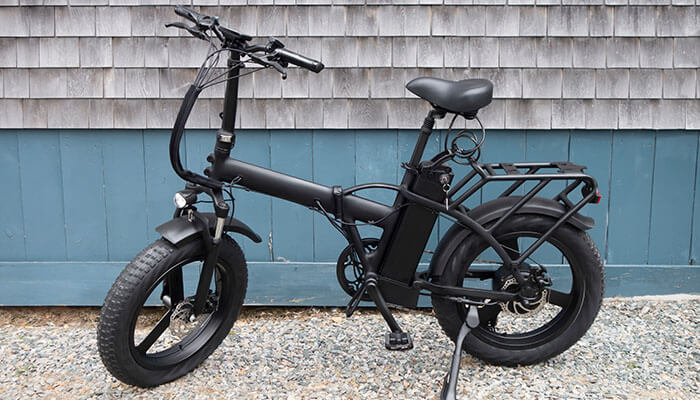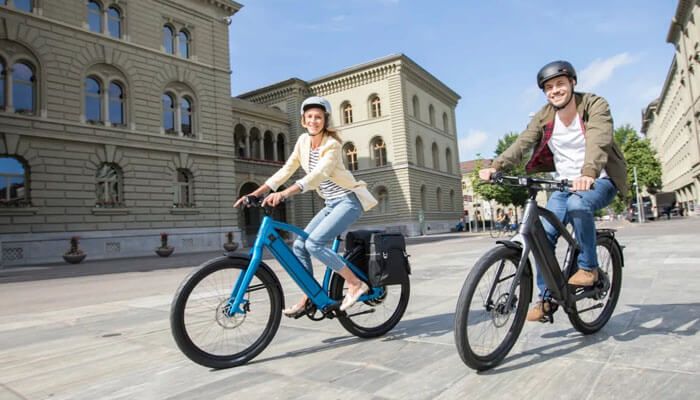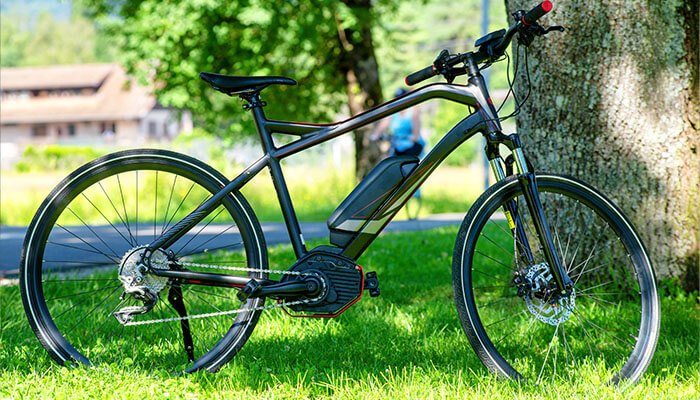An electric bike, also known as an e-bike, has gained significant popularity in recent years due to its convenience, eco-friendliness, and versatility. As more people seek sustainable transportation alternatives, e-bikes have become a go-to option for commuters and recreational riders alike. This blog aims to assess the suitability of e-bikes for daily use, exploring their various advantages and potential drawbacks to help you make an informed decision.
Advantages of Using an Electric Bike for Daily Use
Eco-friendliness
One of the primary benefits of using an electric bike for daily use is its eco-friendly nature. E-bikes produce zero emissions, contributing to a reduced carbon footprint compared to gas-powered vehicles. Additionally, they generate less noise pollution, resulting in quieter and more pleasant urban environments.
Health benefits
Best affordable electric bikes provide low-impact exercise, making them ideal for people of all ages and fitness levels. Regular e-bike use can improve cardiovascular health, build muscle strength, and increase overall stamina. The pedal-assist feature on e-bikes allows riders to adjust the level of assistance, providing an opportunity for a customized workout that meets individual needs and abilities.
Cost-effectiveness
E-bikes can be a cost-effective mode of transportation over time, as they require less fuel and maintenance compared to gas-powered vehicles. Users can save on expenses such as parking and toll fees, as e-bikes often have dedicated parking spaces and can bypass toll booths. Additionally, e-bikes can reduce the need for expensive gym memberships, as they provide a convenient way to exercise during daily commutes.
Improved commuting experience
Using an e-bike for daily commutes can significantly reduce travel time, especially in congested urban areas. E-bikes allow riders to navigate traffic with ease, utilize bike lanes, and take shortcuts that may not be accessible to cars. Moreover, the versatility of e-bikes enables users to combine them with other transportation options, such as public transit, for a seamless and efficient commute.
Accessibility for different fitness levels
E-bikes cater to a wide range of fitness levels and physical abilities, thanks to their pedal-assist features. Users can easily tackle hilly terrains or long distances without excessive strain, making e-bikes a practical choice for those looking to incorporate more physical activity into their daily routines.
Potential Drawbacks of Electric Bikes for Daily Use
Initial costs
One of the primary drawbacks of electric bikes is their high upfront investment. E-bikes can be considerably more expensive than conventional bikes, and additional expenses may be incurred for accessories and safety gear. However, the long-term savings on fuel and maintenance costs can offset the initial investment over time.
Battery life and charging
E-bike users may face limitations in terms of battery life and range, especially if they frequently ride long distances. Charging infrastructure is still developing in many areas, making it crucial for users to plan their routes and charging stops accordingly. Furthermore, battery replacement costs should be considered, as e-bike batteries typically need to be replaced after a few years of use.
Weight and portability
Electric bikes are generally heavier than conventional bikes, making them more challenging to carry and store. Users with limited storage space or those who need to carry their bikes up and down stairs may find the added weight to be a disadvantage.
How to Choose the Right Electric Bike for Daily Use
Assessing your needs
Before diving into e-bike options, it’s essential to evaluate your specific needs, as this will significantly influence your choice:
1. Commute Distance and Terrain: Consider the distance you’ll be traveling daily and the type of terrain you’ll encounter. Longer commutes or hilly terrains may require a more powerful motor and a longer battery range.
2. Storage and Parking Space: Evaluate the available space for storing and parking your e-bike at home and work. This will help you decide on the appropriate size and folding capabilities of your e-bike.
3. Riding Style: Determine whether you prefer a more relaxed, upright riding position or a sportier, aggressive stance. Your preferred riding style will influence the type of e-bike frame and handlebars you should look for.
Consider Bike Features
As you start browsing e-bikes, pay close attention to the following key features:
1. Battery Range: Battery range is crucial for daily use, as it determines how far you can travel before needing a recharge. Look for a bike with a range that comfortably exceeds your daily commute distance to account for detours or unexpected errands.
2. Motor Power: E-bike motors come in various power levels, typically measured in watts (W). A more powerful motor will provide better assistance on hills and challenging terrains. However, it may also consume the battery faster.
3. Frame and Wheel Size: E-bikes come in various frame sizes and wheel diameters. Smaller wheels may provide better maneuverability, while larger wheels offer a smoother ride. Choose a frame size that fits your body dimensions for optimal comfort and control.
4. Gears and Suspension: If your commute includes steep hills or rough terrain, consider an e-bike with multiple gears and a suspension system. These features will make your ride more comfortable and efficient.
Test Ride Different Models
Whenever possible, test ride several e-bikes to get a feel for how they handle and perform. This will help you understand the differences between various motor powers, battery ranges, and bike styles. Renting or borrowing e-bikes is another great way to try out different models before committing to a purchase.
Set a Budget
E-bikes come in a wide range of prices, so it’s essential to establish a budget before you start shopping. Keep in mind that investing in a quality e-bike will likely save you money in the long run on maintenance and replacement costs. Don’t forget to factor in additional expenses, such as accessories, safety gear, and potential battery replacements.
Read Reviews and Seek Recommendations
Online reviews and personal recommendations can provide valuable insights into the performance, reliability, and overall satisfaction of various e-bike models. Consult reputable sources and speak with experienced e-bike users to gain a better understanding of what to expect from different brands and models.
Prioritize Warranty and Support
Choose an e-bike from a reputable manufacturer that offers a comprehensive warranty and excellent customer support. This will ensure that you have access to professional assistance and service if you encounter any issues with your e-bike.
Tips for Maximizing the Benefits of Electric Bikes for Daily Use
Electric bikes (e-bikes) have become a popular choice for daily transportation, offering numerous benefits such as eco-friendliness, cost-effectiveness, and health advantages. However, to maximize these benefits, it’s essential to follow certain tips and best practices. In this article, we’ll discuss several tips to help you make the most of your e-bike experience.
#1. Regular Maintenance
Proper maintenance is crucial for ensuring the longevity and reliability of your e-bike. Make sure to perform regular checkups and take care of the following components:
1. Battery Care: To extend your e-bike battery’s lifespan, avoid overcharging or completely discharging it. Store the battery in a cool, dry place and charge it at least every few months, even if not in use.
2. Brake and Tire Checks: Inspect your brakes and tires regularly for wear and proper function. Keep your tires inflated to the recommended pressure and replace brake pads when necessary.
3. Drivetrain Maintenance: Clean and lubricate your e-bike’s chain, gears, and other drivetrain components regularly to ensure smooth, efficient performance.
#2. Safety Precautions
Prioritizing safety is essential when using an e-bike for daily transportation. Follow these safety tips to minimize the risk of accidents and injuries:
1. Wear Protective Gear: Always wear a helmet while riding your e-bike, and consider additional safety gear such as gloves, elbow pads, and knee pads for extra protection.
2. Observe Traffic Rules: Follow all traffic laws, signals, and signs, just as you would when driving a car or riding a conventional bike. This includes signaling your turns, stopping at stop signs, and yielding to pedestrians.
3. Be Visible: Ensure that your e-bike is equipped with front and rear lights, and wear reflective clothing or accessories, especially when riding in low light conditions or at night.
4. Practice Defensive Riding: Anticipate potential hazards and be prepared to react quickly. Maintain a safe distance from other vehicles and be extra cautious at intersections.
#3. Customizing Your E-Bike
Tailoring your e-bike to your specific needs and preferences can enhance your overall riding experience. Consider the following customization options:
1. Adding Accessories for Convenience: Equip your e-bike with useful accessories such as a rear rack, panniers, or a basket to carry your belongings. A smartphone mount or a GPS device can also be helpful for navigation during your daily commute.
2. Upgrading Components for Better Performance: If you find that your e-bike’s stock components aren’t meeting your expectations, consider upgrading parts such as the saddle, tires, or handlebars for improved comfort and performance.
#4. Plan Your Routes
To optimize your daily e-bike commute, plan your routes to ensure they are efficient and safe. Use smartphone apps or online mapping tools to find bike-friendly roads, bike lanes, or dedicated cycling paths. Familiarize yourself with your route and identify potential hazards, such as busy intersections or steep hills, to be better prepared.
#5. Monitor Battery Usage
Be mindful of your e-bike’s battery usage during daily rides to avoid running out of power unexpectedly. Keep track of your remaining battery life, and adjust your riding style or assistance level if necessary to conserve energy. Consider carrying a spare charger or battery for longer rides or in case of emergencies.
Bottom Line
In summary, electric bikes offer numerous advantages for daily use, such as eco-friendliness, health benefits, cost-effectiveness, improved commuting experience, and accessibility for different fitness levels. However, potential drawbacks like initial costs, battery life and charging concerns, and weight and portability issues should be taken into consideration.
Ultimately, the suitability of an e-bike for daily use depends on individual needs, preferences, and circumstances. By carefully assessing your requirements and choosing the right e-bike, you can enjoy a more sustainable, healthy, and efficient mode of transportation that aligns with your lifestyle.




